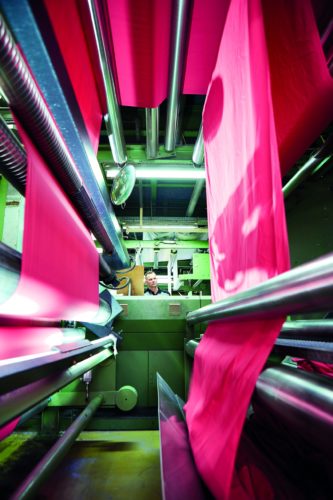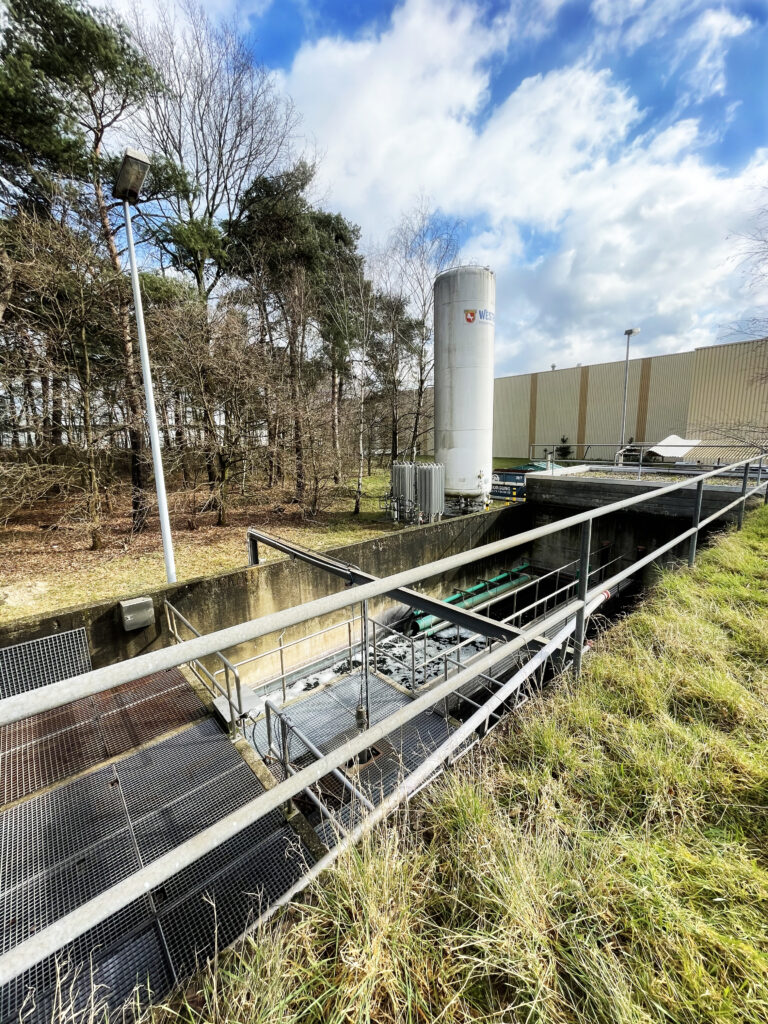Our environmental aspects
The identification of direct and indirect environmental aspects is an essential part of any environmental management system. These aspects are recorded, evaluated and reviewed at regular intervals.
Direct environmental aspects
Direct environmental aspects are closely linked to our company’s activities and products, and can be fully controlled.
The environmental management system has a positive effect on the company’s environmental performance, including, for example, the regular collection of key figures and continuous improvement through the implementation of the environmental programme.
The production processes are very energy-intensive and very water-intensive. Requirements for water abstraction based on the water right permit must be complied with.
Various chemicals and potentially hazardous substances are used in production. Requirements for the safe and proper handling of these substances must be taken into account, in order to exclude hazards for employees and the environment. In the event of non-compliance, sources of environmental impact such as contamination of the soil and water, as well as endangering the health of employees, cannot be ruled out.
The production processes emit mainly total carbon, methane, methanol, formaldehyde and other organic substances. Deviations from the permissible limit values would lead to increased environmental pollution. The operation of plants for the pre-treatment and finishing of textiles is regulated by the Federal Immission Control Act.
An indirect discharge permit entitles the company to discharge waste water from production into the public waste water system of the city of Rheine. The minimisation of residual paint and finishing liquors, the regular monitoring of the values in the company’s own mixing and equalisation basin, and compliance with the requirements stipulated under the permit must be ensured at all costs, in order not to endanger the environment or negatively influence the operation of the wastewater plant.
Improper disposal of any waste poses a hazard to the environment and employees. Since residual waste is only recyclable to a limited extent, both the separation of the different types of waste and the minimisation of residual waste must be ensured. The share of waste declared as "hazardous" is less than 0.5 %. What is relevant, however, is the storage and proper disposal of residual liquors and types of sludge. These must be disposed of by a qualified service provider to avoid triggering a negative impact on the environment.
The production processes on site are characterised by high electricity, gas and water consumption, the use of various chemicals in the finishing process, and a high volume of waste water. These factors increase the risk of incidents with a potentially negative environmental impact. Due to the company’s proximity to the “Hengemühle” landscape conservation area and the “Emsaue” nature conservation area, deviations from limit values or environmental accidents would lead to increased pollution of these conservation areas.
Indirect environmental aspects
Indirect environmental aspects are caused by the company’s interactions with third parties. They, therefore, relate primarily to upstream and downstream processes, processes that take place both in the supply chain and at our customers’ premises.
The processed textiles in the current product portfolio are predominantly made of conventionally grown cotton, virgin polyester and elastolefin. The cultivation of cotton can entail various types of negative impact, especially in regions with water scarcity or weak environmental regulations. Cultivation in monocultures places an additional burden on regional ecosystems. Crude oil is used for the production of polyester. Elastolefin, also a chemical fibre, can also have negative consequences for the environment due to solvents and spinning oils used in the production process.
In raw fabric production, energy consumption is very high and the use of renewable energies is almost non-existent in some production countries. In addition, the choice of sizing agents and the improper use of other chemical auxiliaries (e.g. spinning oils) can have a negative impact on the environment. The production of basic chemicals and the majority of dye and auxiliary production takes place in regions with a weak enforcement of environmental regulations. This poses a potential threat to the environment and the societies living there.
The development of the textile industry and, with that, our market, in a paradigm shift towards sustainability and environmental protection is an important concern for us. Our own involvement in associations and organisations, as well as networking with various comrades-in-arms, makes a positive contribution to the sustainable development of the textile industry. Membership of the Partnership for Sustainable Textiles is particularly noteworthy here.
Customers often use our products in the leasing sector, where they are subject to further professional reworking. This treatment is water and energy intensive, and various treatment agents are used here. Improper processing has a significant impact on the longevity and durability of the goods. Partially washable finishes and fibre residues can get into the textile service provider’s waste water during the treatment process. End-of-life disposal is, in a best-case scenario, the product’s reuse. In this recycling process, textile waste is further processed into cleaning rags, insulation material or in the tear fibre industry. Although energy is generated during thermal recycling, various gases are also produced in the combustion process.
Depending on the country of origin, the raw fabric is usually delivered by sea or by truck. The transport routes of other supply chains are largely unknown. The delivery of raw and auxiliary materials to our production site, the transport to (and from) our finishing partners and the dispatch of the sold goods are also carried out via HGV. Business trips, as well as the arrival and departure of employees, are mainly made by car. This is associated with environmental pollution, such as the emission of carbon dioxide (CO2) or nitrogen oxides (NOX).


